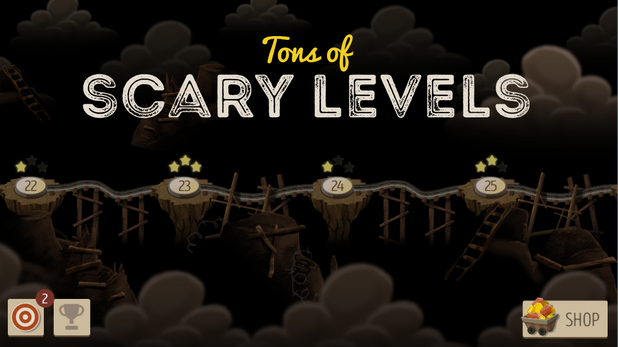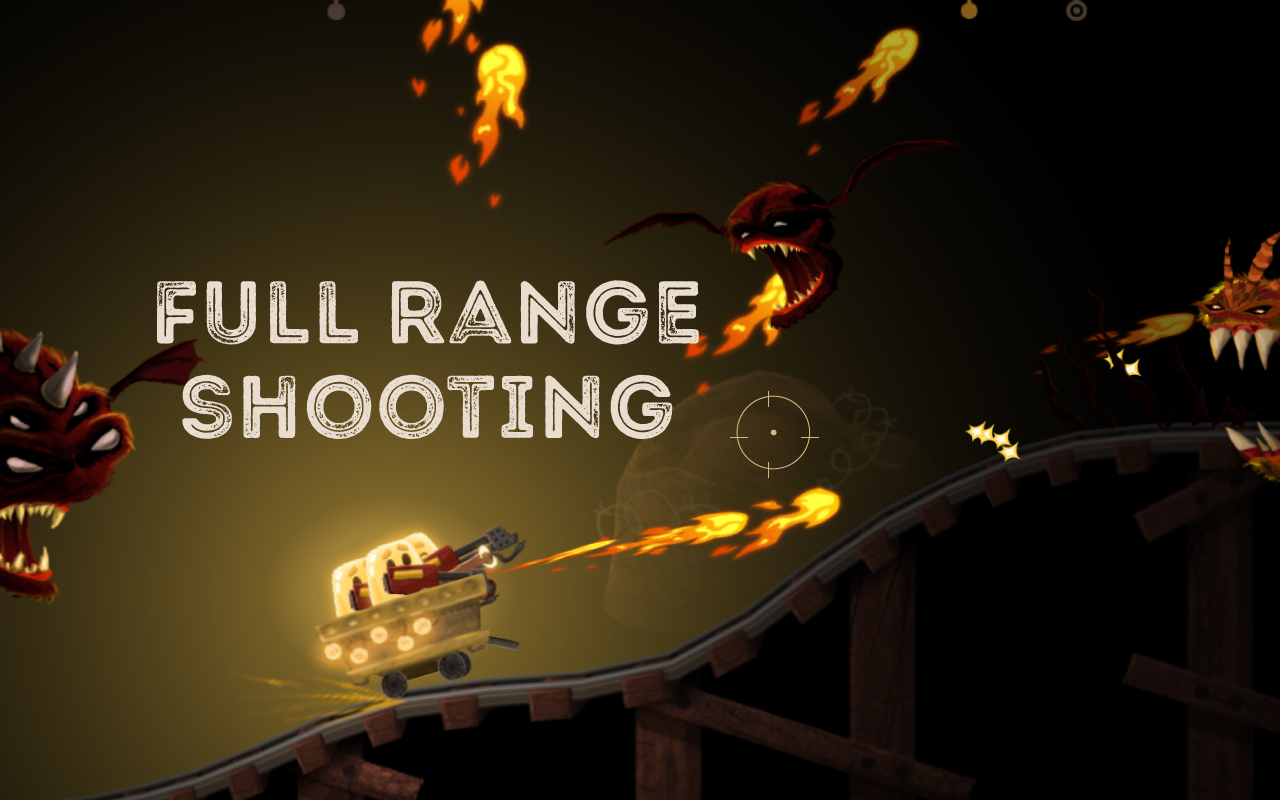The blobs are back! Do you have what it takes? Our cute hopeless blobs must escape the limbo dark cave using their fast minecart! Challenge your skills as you join the ride, shooting monsters and saving blobs along the way. Enjoy dynamic movements, full-range shooting, and thrilling, fast-paced action in this sequel to the highly popular Hopeless: The Dark Cave. Test your reflexes with multiple levels and a variety of weapons to beat the scary monsters in this cute and funny horror game! KEY FEATURES: • Advance through the cave with more levels! • The blobs are on the move! • Jump right into the action without a tedious tutorial! • Test your shooting in this pulse-pounding dark limbo environment! • Think fast, act fast! Push your skills to the limit!
(1) Break your boundaries:
In order to create a groundbreaking new game, be it a sequel or an original, adding new core mechanics are a must to defeat the existing limitations of the user experience. The Hopeless designers accomplished this in two ways: by adding the concept of movable characters and by shifting the user’s’ point of view.
In the original Hopeless game, blobs were static and quite literally ‘hopeless,’ as monsters came and attacked them. In the sequel, the characters are much more mobile – all because of a change in their basic motive as characters. Instead of just shooting the monsters, the blogs now have to escape the cave while shooting the monsters. A new dynamic has been added – the element of escape – and the motive shifts from simply remaining alive to the possibility of escaping.

The Hopeless team also changed the perspective of the game. The first game had a top-down format, where players’ point of view was above the characters, looking down on the situations and actions in the game. In the sequel, the designers of the game created a new viewpoint, from the side angle, where players are on the same level of the characters in the game. Shifting from a top-down to a side-scroll angle was a tactic which helped expand the game’s landscape, giving more context to the user experience.
(2) Create New Challenges that Improve Play and add Monetization Opportunities (In Other Words, Help People Buy More Guns)
Many games are reflex-based, meaning that most of the experience and progress a player makes comes from outside the design of the game itself, based more on a player’s reflex than anything else. With reflex-based games, the learning curve is not in the control of the game designers, resulting in limited access to managing a user’s success in the game – i.e. making it easier or harder on them.
What this means is that often, a player’s reflexes can limit their progress and engagement in the game, as they either give up or manage to overcome each challenge in the game with their quick reflexes. The solution is to add new and exciting parameters that did not exist in the original, like hit points. In the original Hopeless, clicking in the direction of a monster resulted in its death. There was minimal complexity in the one-click process, which minimized the likelihood of users making in-app purchases for more powerful guns.
In Hopeless 2, Niv and his team created more challenges, such as varying shooting ranges and directions, as well as adding more powerful guns that are needed to kill the more powerful monsters. Through these added obstacles, and in order to truly succeed in the game, players are instantly directed to the game’s IAP funnel, further improving monetization.
Other potential options that can be implemented in order to improve complexity in the game is to build a world with physical rules, where the game designer has more control of the forces in the game (such as the speed at which a character is moving or other external forces that can impact their success in completing the game).
(3) Create an evolution to the game:
By implementing a moving background to their original Hopeless game, the team at Upopa Games added a feeling of progression and a sense of exploration and evolution to the game. With something as simple as a moving background – something that can be done in almost every digital game – users get a heightened sense of progression throughout the game.
A prime reference here is Best Fiends, a top-rated puzzle game that combined a moving background with Candy Crush-style mechanics to establish both an evolution in the game, and utilize a player’s positive familiarity with Candy Crush.
(4) The endless discussion – levels vs. endless?
When creating a gaming app, a hot topic that often comes up is whether to create a levels-based game, where your user has to beat each level one at a time to advance, or an ‘endless’ game without levels. While levels may involve more effort on behalf of the developers, and are slightly more costly, they tend to create maximum excitement for the player.

The game Dots by Playdots illustrates the financial success that applying levels can provide to your game. The original Dots was in endless mode without levels, making monetization tough, so when creating their sequel (Two Dots), the designers added levels into the game, which made it a huge success financially.
The multiple levels equate with a variety of different goals for longer retention while adding a concrete competition value and more opportunity for monetization with expanding IAP offers throughout each level progression.
(5) Preserve the original style:
When the game designers at Upopa found themselves stuck on a specific question or issue while creating Hopeless 2, they relied on their tried and true method: what would the blobs do?
“Throughout the entire creation process of the sequel, we always stopped to think, ‘what would the blobs from the first game do in this situation?’”
It’s essential not to stray too far from the original DNA of your game, preserving the style that your fans loved in the first place. In Hopeless, the theme of the game was the title itself – the blobs are in fact hopeless. They are doomed from the start and will never have great power, and so keeping the original theme in mind, the sequel’s progression remains both new and exciting while meeting the audience’s expectations of the game series and sticking to what attracted users in the first place – the cute and doomed blobs!
Sequels are a tricky endeavor, having been proven to be both amazing successes and utter failures. With hundreds of sequels being released daily, it’s essential not to rush the process, as the approach taken to create a sequel to a game is critical to its success. Hopefully these tips from Upopa Games developers on the creation of their sequel are helpful tools to consider when approaching the possibility of a sequel.
















